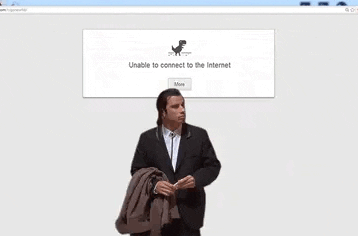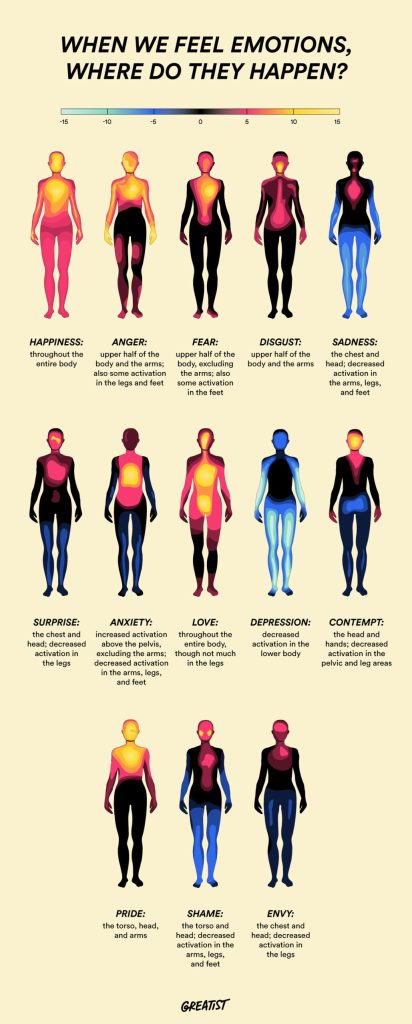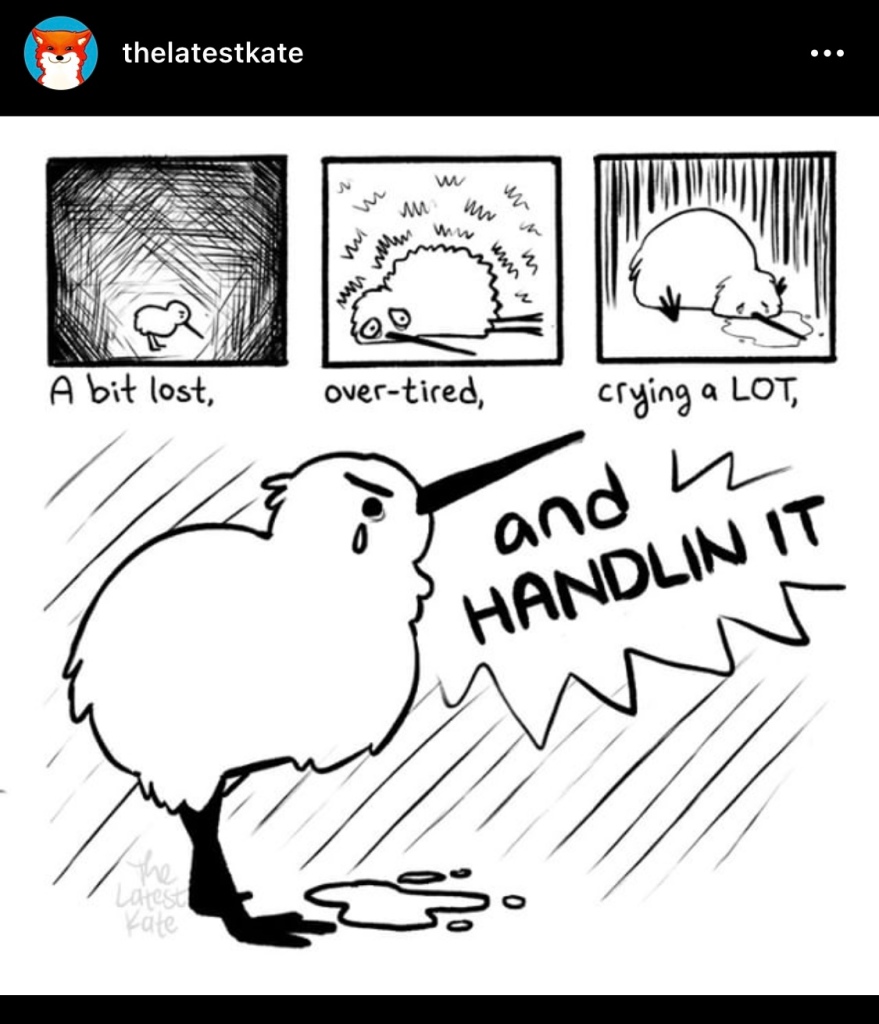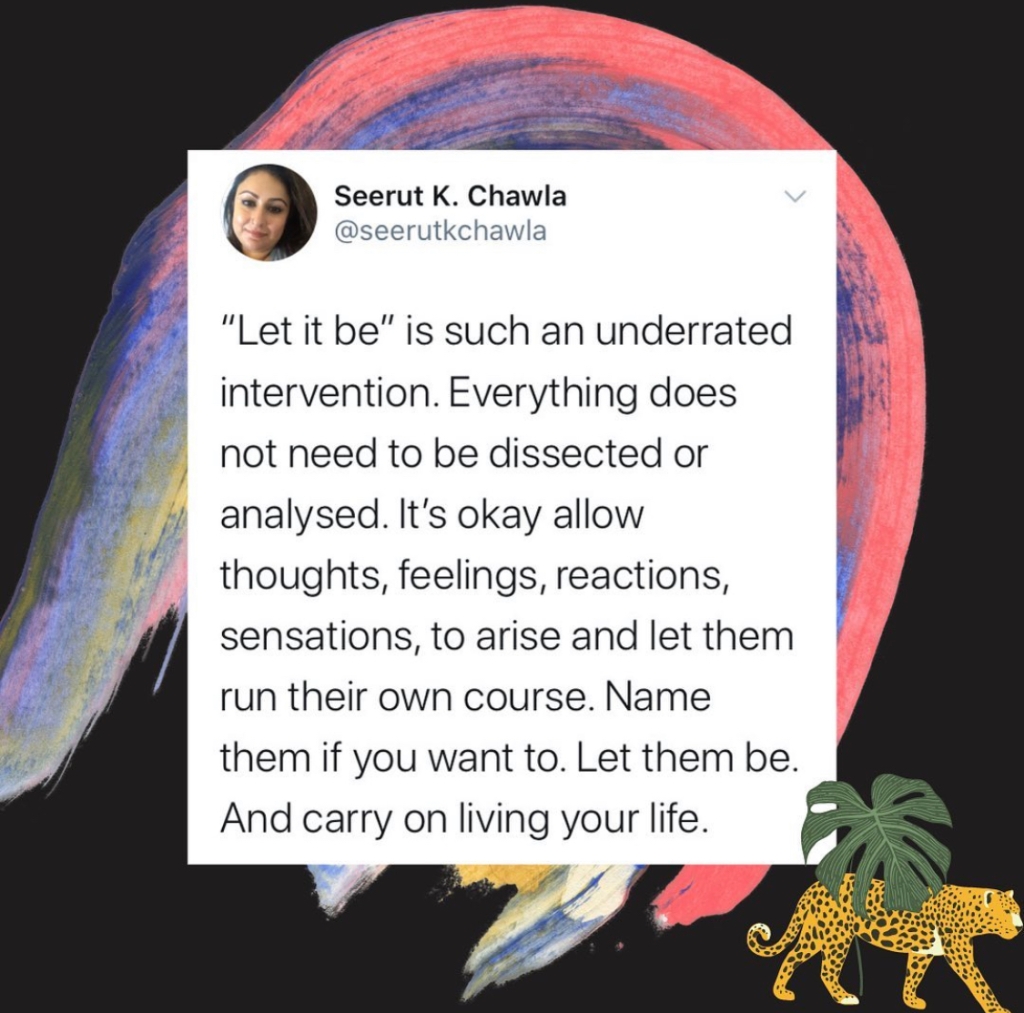Burnt out? Me too.
Amelia Meman, GWST ’15, is the Assistant Director of the Women’s Center. Amelia uses they/them and she/her pronouns.
Burnt out? Me too.
This is not a new feeling for me. I have gotten to this same point during other parts of my academic and now professional career. This apex where I thought that if I was able to give it enough gas, stomp on the accelerator, and shut my eyes I could sail across the swiftly oncoming ravine.
 This is how I would like to navigate burnout. Goodbye, plebeian worries!
This is how I would like to navigate burnout. Goodbye, plebeian worries! [Image description: a GIF from the movie Grease wherein main characters Sandy and Danny drive off into the sky in a red convertible. Sandy turns back to wave goodbye to the crowd.]
Let me tell you… I’ve never been able to sail over the ravine.
 This is me. [Image description: a GIF of a small green car spinning out and finally falling off a small cliff.]
This is me. [Image description: a GIF of a small green car spinning out and finally falling off a small cliff.]Burn out is unavoidable sometimes. Especially when we do not give ourselves the time and space to feel what we need to feel. It can come along for anyone doing anything. Maybe you don’t have the best apartment for experiencing alone time. Maybe you have way too many things going on between teaching your kids and managing online classes.
In my case, I just work. I work and work and work. My ridiculous proclivity for work inspired Rihanna’s classic. No joke! (I’m lying.)
I work because I really love my job and I feel a great sense of joy from having a purpose. I also work, because it’s my way of exerting control–and when you’re in a pandemic that has no end in sight, you crave a sense of control. So for this latest trip to Burnout Town, I have pushed aside my feelings and any sense of personal boundaries, so that I could focus on getting tasks and projects finished.
I’m going to be using this ongoing metaphor of traveling on a road trip, so back to me in my car on a cliff: I pushed my car to its zenith mechanically and I also got a little (or maybe a lot) lost. The road was bumpy and dust was flying everywhere. The steering wheel was vibrating and I don’t remember when I last refueled, but all I wanted to do was get out of the rough patch we call Burnout Town by rocketing over the oncoming gulch.
And now here I am, relating to you how to navigate Burnout Town, because I’m here now and it’s as crummy as the reviews it’s received on Yelp.
Maybe you’re predisposed to burnout?
Before I get into the roadmap, this wouldn’t be a Women’s Center blog if I didn’t also mention how identity connects to burnout. Recently, I attended a presentation about the impact of COVID-19 on women in higher education. Needless to say, the numbers are fairly depressing, but they’re important to witness, because there is a sharp divide along gender lines and along racial lines (and disability lines and class lines, etc.).
The people who are doing both their professional work and family work are most often women. The people who feel most exhausted/overwhelmed are most often women. The people who are, in addition to working or searching for work, looking after children or elderly family members are, you guessed it, most often women.
Ultimately, women are predisposed to burn out.
And people with other marginalized identities are similarly situated. For example, women might bear the weight of stressors disproportionately to men, but when we dissect groups of women by race, we see that stressors are also disproportionately carried by women of color–especially Black women.
Some might recall Sheryl Sandberg’s pop feminist concept of “lean in,” wherein, if you are a powerful woman at the top of your game, the feminist thing to do is to lean in and empower the other women around you rather than succumbing to the whitecisheterocapitalist competitive individuality that is typically ingrained in our definitions of success. What isn’t talked about is how white women frequently lean ON women of color for their social, emotional support.
I appreciate what Loretta Ross said when she spoke out against racist/sexist stereotypes via the Women’s Center’s Telling Our Stories campaign; she said, “I am not your Tit,” which is to say: “I am not the person you can come to when you need to be nurtured, babied, supported unconditionally,” because as a Black woman, Loretta Ross doesn’t owe anyone that access to her energy, body, and psyche. Especially considering the long history of Black women being exploited as caretakers and caricatured as such (see “I am not your nice Mammy” by Cheryl Thomson).
 Loretta Ross’s Telling Our Stories poster. [Image description: a graphic poster in yellow and navy blue. Top text reads “Women of Color: Telling Our Stories.” Below a cut out image of a Black woman wearing a bright red dress and red patterned vest is smiling. Next to her image reads, “My name is Loretta and I’m not your Tit.”]
Loretta Ross’s Telling Our Stories poster. [Image description: a graphic poster in yellow and navy blue. Top text reads “Women of Color: Telling Our Stories.” Below a cut out image of a Black woman wearing a bright red dress and red patterned vest is smiling. Next to her image reads, “My name is Loretta and I’m not your Tit.”]It’s not just annoyance or an unwillingness to get things done that makes stress such an issue for women and other minoritized folks: it’s really that consistently high levels of stress are deadly.
Stress is killing marginalized people
First, I should name that I am operating from the assumption that those with target identities face more stress than those with agent identities. The sociological concept that I am referring to here is called “minority stress theory,” which posits that minorities experience heightened amounts of stressors by virtue of living in a systemically oppressive society.
When we think about stress and where it lives in the body, I think many folks would locate stress in our minds. Stress, for us, is that little (or big) voice that tugs at your mind saying, “Hey, loser. Heads up: you have a huge project due tomorrow, you need to buy groceries, and all of your pandemic plants are dying!” In reality, though, everything is connected and stress manifests throughout a body. When we take in stressful inputs, or “stressors,” we might be thinking about a lot of things but we also might feel our heart rate go up, our breath catch more often, or our insomnia gets the best of us. Stressors impacting a body might also cause our necks and shoulders to get stiff with tension, as well as strengthen the headache making its way around your skull.
Ultimately, stress has inextricably holistic effects and at high, prolonged levels, the effects of stress add up. In a 2007 article on the connections between racial bias and health outcomes, a team of scholars (Ahmed, Mohammed, and Williams) synthesized the many patterns and trends to form the conclusion that bias is not just a social and political issue, but a public health issue. This is an excerpt from the Ahmed, et al. paper that outlines the pathways from racial bias incident to adverse health outcomes (the figure below visualizes this relationship):
Allostasis is the body’s ability to maintain homeostasis and to adapt to stressful events by appropriately activating the neuroendocrine, autonomic, and immune systems, and then to return to the basal state when the stressful event is past. While allostasis is adaptive in the short term, the cumulative burden of cycles of allostasis in response to repeated or chronic stress can be damaging and lead to multiple disease states. The concept of “allostatic load” refers to the cumulative wear and tear that the body experiences on these multiple regulatory systems as a result of repeated cycles of allostasis as well as the inefficient regulation of these cycles… High allostatic load is associated with the metabolic syndrome, and predicts mortality, cardiovascular disease incidence, and decline in cognitive and physical function.
Williams, D. R., & Mohammed, S. A. (2009). Discrimination and Racial Disparities in Health: Evidence and Needed Research. Journal of Behavioral Medicine , 32, 20-47.
I don’t share this information with the intention of being a harbinger of death nor am I trying to scare everyone into therapy. I talk about this stuff because it not only puts into perspective the vast importance of mental health and wellbeing but also the ways in which oppression impacts a body at a biological level. Burnout and stress and anxiety and depression are social justice issues, because we live in a socially unjust world–so in doing this critical social justice work, we need to continue to center the oppressed and bring an intentional, critical awareness to the fact that being well and surviving burnout hinges on being able to survive constant systemic violence.
Roadmap through Burnout Town
Okay, so enough with my TED Talk, you’ve reached the point where we can roll up our sleeves and return to this grand road trip metaphor I teased at the beginning of this blog. Let’s put the pedal to the metal… or… actually…
STEP 1: Notice where you are, how you are feeling
 I didn’t know I was going to rely so heavily on John Travolta for this blog, but here we are. [Image description: a GIF of John Travolta a la Pulp Fiction looking around as if he is lost. He is superimposed over a browser window that reads, “Unable to connect to the Internet.]
I didn’t know I was going to rely so heavily on John Travolta for this blog, but here we are. [Image description: a GIF of John Travolta a la Pulp Fiction looking around as if he is lost. He is superimposed over a browser window that reads, “Unable to connect to the Internet.]Burnout, for me, often exists in tension with my own sense of perfectionism and anxiety. This is to the point that I often don’t notice how I’m feeling until I’m crashing. You might do this, too: At noon, I promise myself that if I just get my inbox down to zero, I’ll be able to get up from my computer and eat my lunch. Cut to 3:58 pm where I am bent over my keyboard and finalizing the last reply to an email and feeling mighty resentful that I have a meeting from 4 to 5, and my lunch is still in the office fridge.
It’s really hard to know when to stop.
Beyond the fact that we live in a Western, capitalist society that places value in the white knuckle pluck it takes to do the impossible–we’re just not always tuned into our bodies. That’s why this first step is the hardest because we have to learn what burnout feels like in our bodies and when to take notice.
I am by no means perfect at this, but some things that have helped me come into a more compassionate awareness of my body and my feelings are things like mindfulness and grounding activities. I’m particularly fond of the “body scan,” which asks you to check in with each part of your body to see how you’re doing.
There are a lot of grounding techniques and they’re all a little bit different, so if you haven’t found the one that resonates with you, fear not. Experiment and enjoy the process of finding what works for you.
STEP 2: Pull off the road and put the car in park
 This is me. [Image description: a GIF of a child getting frustrated and repeatedly asking a person moving around in front of them to stop.]
This is me. [Image description: a GIF of a child getting frustrated and repeatedly asking a person moving around in front of them to stop.]Okay, so you’ve identified that something feels wrong and you’ve stopped your car. AWESOME! I mean, not awesome that something is wrong, but… well, you know.
If it feels weird for me to celebrate your having to stop what you’re doing due to burnout, I want to be sorry, but I’m not. Here’s my thing: we don’t applaud saying “no” enough.
Saying “no” is boundary-making/-maintaining and it’s critical to protecting your energy. Some may react to your boundaries with negativity. The classic, “What is wrong with you? Why don’t you want to come with me to the Chipotle grand opening?” But when you make the decision to stop because you’re being compassionate toward yourself, it’s the next step in working through the burnout.
I don’t have much advice to share with you on this (other than to celebrate people’s “no” moments more often), but remember that even when you stop, it doesn’t mean you’re stopping for forever. It doesn’t even have to mean you’re stopping for the day. It just means you are striving to be present with yourself and that is a really good thing.
STEP 3: Take your time in running diagnostics and ask for help if you need it
Process, process, process. Lots of mental health professionals (including my therapists) will ask if you’ve processed these emotions–but what the heck does that mean? Well, I’ll tell you!
Processing emotion is.
It just is. We’re doing it all the time, we just don’t know it until we have some big bad emotion we don’t want to feel. We might be processing joy as we watch our kid giggle at something mundane. We might be processing anger as we get cut off by someone driving erratically. The process is the doing and emotion is always going through you.
But if you’re having trouble, start with noticing what’s happening in your body. For example, let’s try right now: take a breath and scan throughout your body; are your feet on the ground flat or are they bouncing? Are your shoulders up near your ears or are they drawn down? Do you feel more weight on one side of your body than another? Are your eyelids feeling heavy?
When we check in with our body, we can usually get a better idea of what’s happening. If your all tensed up around your shoulders and gritting your teeth, you might be angry. If you’re stomach hurts and your breathing a little heavier, you’re probably nervous. There’s a whole science to this “emotional sensations” stuff:
 Full article from Greatist is here: Where Are Emotions Felt in the Body? [Image description: an infographic showing representations of emotion as they are felt through the body.]
Full article from Greatist is here: Where Are Emotions Felt in the Body? [Image description: an infographic showing representations of emotion as they are felt through the body.]And yeah, maybe you already knew that tears coming out of your eyes meant that you were feeling sad, fair enough, but the next step of understanding your emotions is to work through it. You can do so by talking it out, writing about it, doing some movement-based thing like dancing or walking, hugging a loved one for a long time. There are a whole bunch of things that you can do to work through your emotions.
But what I really want to point out is that, foundationally, “processing emotion” is just feeling emotions. It’s not about expelling them, wringing them out of our bodies, or fixing our brains. Feelings are normal and valid and important–and try as we might, we cannot escape them, so we better get comfortable with having them along for the ride.
STEP 4: Get back in the car, and go where you need to go whether that’s a rest stop, the McDonalds drive-thru, your grandma’s house, or a gas station
 From Kate Allan (Instagram: @TheLatestKate). [Image description: a comic of a kiwi bird. The panels read, “A bit lost, over-tired, crying a lot, and handlin it.”]
From Kate Allan (Instagram: @TheLatestKate). [Image description: a comic of a kiwi bird. The panels read, “A bit lost, over-tired, crying a lot, and handlin it.”]
Once you’ve done your body scan and taken the time to identify the emotion(s) or stressors that are impacting you, go take care of yourself. I know I just said this piece can be as simple as taking a walk, but there is a little more maintenance and intentionality involved.
You have to actually slow down and make a plan to get better. For me, that sometimes just means blocking off time in my calendar for human moments like going to the bathroom, eating my lunch, or talking to a friend (usually not all three at once, though). For others, maintenance might be finding a therapist, taking a nap, or finally making the doctor’s appointment you need to make. Regardless of what it is, make a plan to do it and then… do it.
Follow through with your care plans and maintain their value. Others might question your priorities or consider it too “woo” to take a 10 minute meditation break–but their judgment isn’t helping you feel better so why listen to it?
I also understand that not everyone has understanding bosses or even the private space to meditate–and that’s why it’s important to create a plan that takes into consideration access, compatibility, and any communication that needs to happen beforehand. Normalize burnout, anxiety, depression, etc. Normalize the need to take time for yourself and to be curious about your healing journey. You’re worth it.
STEP 5: Know that it’s okay to get lost
I’m ending this blog here, with the sentiment that it’s okay to get lost. It’s okay to be burnt out. It’s okay to discover your rock bottom. It’s okay that this is hard freaking work. We’re in a pandemic, for goodness sake; and COVID-19 is not a scapegoat. It’s genuinely a massive shift to the gravity of our lives.
And regardless of worldwide killer viruses, our lives are always complex. Burnout is just another means to learn more about our bodies, emotions, and human needs. Getting lost is just another form of discovery.
Burnout, stress, emotional angst–it’s real, it happens, and the important thing to know is that:
- this is temporary
- you’re not alone
- it’s not over, and
- getting lost is sometimes part of the journey.
Regardless of where you are, you can find yourself.
So even if you’re gunning the engine to get over the cliff or beyond the next highway or just out of this weird muddy rut, you can still slow down. Pull over. Take a beat to look up and be curious about the resilience of stars. Be in awe of the innumerable possibilities of where a breath can take you next. You got this.
 A post from Seerut K. Chawla (Instagram/Twitter: @SeerutKChawla). [Image description: a tweet reading, “Let it be is such an underrated intervention. Everything does not need to be dissected or analysed. It’s okay to allow thoughts, feelings, reactions, sensations, to arise and let them run their own course. Name them if you want to. Let them be. And carry on living your life.” ]
A post from Seerut K. Chawla (Instagram/Twitter: @SeerutKChawla). [Image description: a tweet reading, “Let it be is such an underrated intervention. Everything does not need to be dissected or analysed. It’s okay to allow thoughts, feelings, reactions, sensations, to arise and let them run their own course. Name them if you want to. Let them be. And carry on living your life.” ]
Posted: November 4, 2020, 2:46 PM